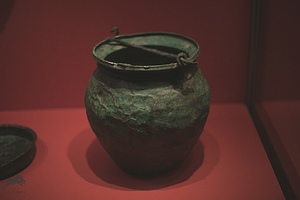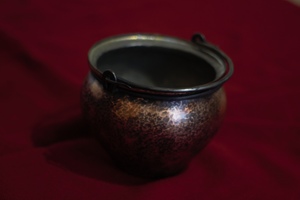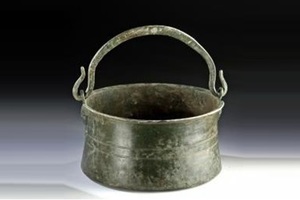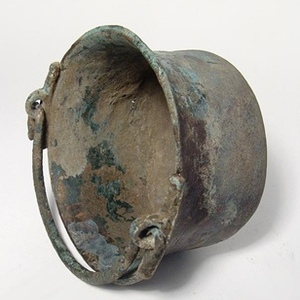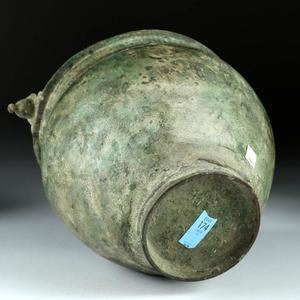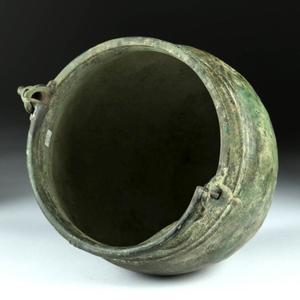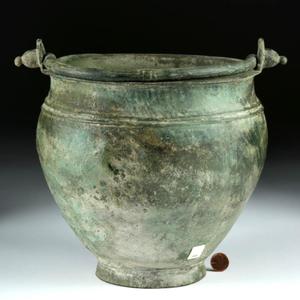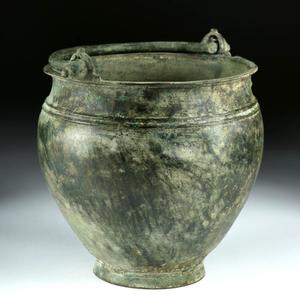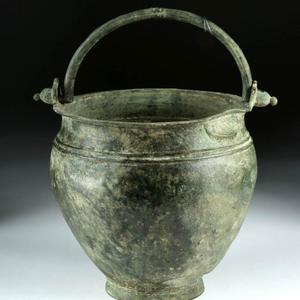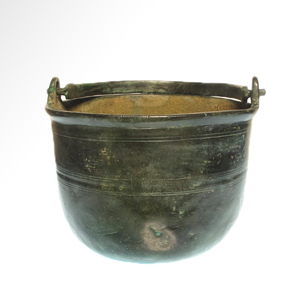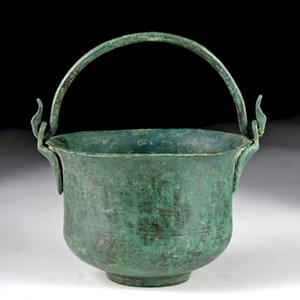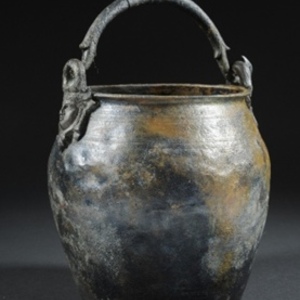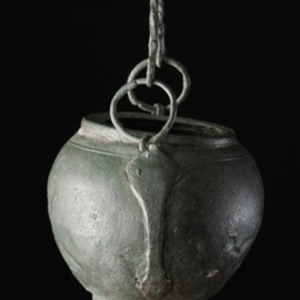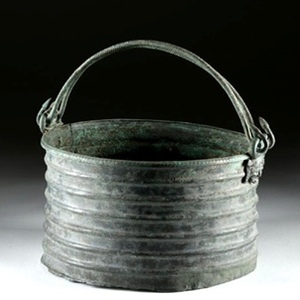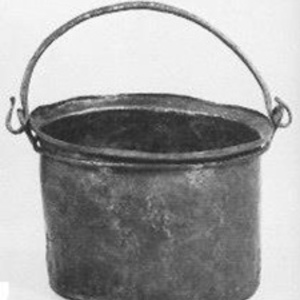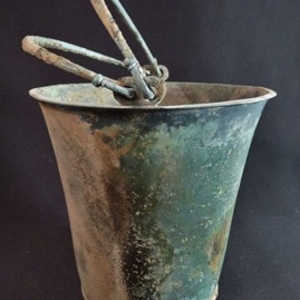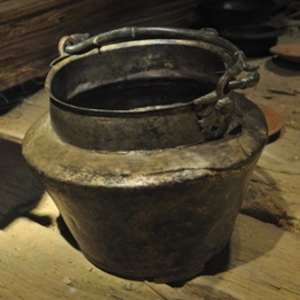Situla
A situla (Latin: situla) is an ancient vessel resembling a bucket, commonly used in antiquity across Europe. Situlas were most often made of metal, though ceramic versions also existed. These vessels had a cylindrical or truncated conical shape, with a flat or rounded base, and were typically equipped with a handle. The primary purpose of a situla was to carry and store liquids, but in some cases, they were used for ceremonial purposes as well.
Situlas had a simple yet functional design, making them convenient for practical use. They were generally cylindrical or conical in shape, which made pouring and emptying liquids easier. The base of a situla could either be flat, providing stability, or rounded, depending on its intended use.
The handle, usually made of metal, was attached to the upper part of the vessel, making it easy to carry. Handles could be either plain or adorned with decorative elements. For added strength and durability, situlas were sometimes reinforced with iron or bronze bands around the rim and base.
Situlas were widely used in ancient Europe over several centuries, from the Iron Age through to the Roman period. They were prevalent among various peoples, including the Etruscans, Celts, and Romans. In particular, situlas gained popularity in the Roman army, where legionaries used them as part of their campaign gear.
Beyond their utilitarian use, situlas played a significant role in rituals and ceremonies. For instance, ceremonial situlas, often decorated with intricate reliefs and ornaments, were used in religious rituals, funerary ceremonies, and other important events. These items were made from more precious materials, such as bronze or silver, and were adorned with scenes from mythology, everyday life, or animal motifs.
One notable example of a Roman situla is a bronze piece found in Pompeii, dating back to the 1st century AD. Measuring 33x26 cm, it was discovered in the villa of Carmiano in Gragnano, within the Archaeological Park of Pompeii. This vessel has an oval body with a flat base, a wide mouth with an expanded rim, and a slightly indented edge. The upper part of the rim is reinforced with an iron band featuring profiled ends that form two attachment rings for the handle. The handle itself is made of iron and has a typical design known as Tassibari 1000.
Situlas are important artifacts for archaeologists and historians, as they provide insights into the daily life and culture of ancient societies. Many situlas have been found in burial sites, indicating their symbolic significance in funerary practices. Some of these vessels were richly decorated, demonstrating the high level of artistic craftsmanship among ancient artisans.
An example of such art is the so-called "Situla of Brunnen," dated to around 600 BC, which is adorned with complex reliefs depicting scenes from the life of Celtic tribes. Artifacts like these are valuable sources of information about the social structure and religious beliefs of ancient peoples.
Related topics
Ancient Military Campaigns, Cauldron
List of literature
- Margaret Steig Dalton, Laurie Charnigo. Historians and Their Information Sources. September 2004. p. 419, n. 18.
- Richard Veit and Christopher Writing. Reading and Research (8th ed. 2009), p. 335.
- Pliny the Elder. "Natural History "(compilation of translated fragments), book 34, XLVIII, 160.

 Gallery
Gallery






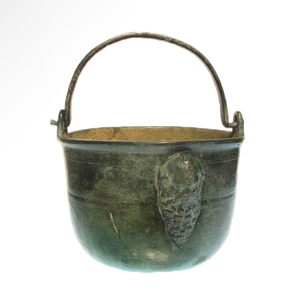 Bronze situla with the head of Silenus. Private collection in London. Height - 8.9 cm. 2nd century AD.
Bronze situla with the head of Silenus. Private collection in London. Height - 8.9 cm. 2nd century AD.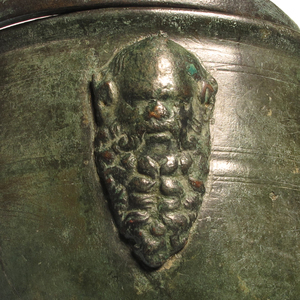 Bronze situla with the head of Silenus. Private collection in London. Height - 8.9 cm. 2nd century AD.
Bronze situla with the head of Silenus. Private collection in London. Height - 8.9 cm. 2nd century AD.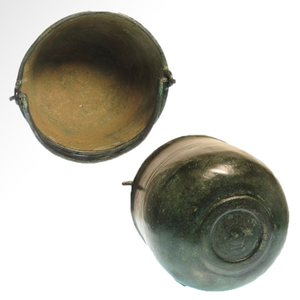 Bronze situla with the head of Silenus. Private collection in London. Height - 8.9 cm. 2nd century AD.
Bronze situla with the head of Silenus. Private collection in London. Height - 8.9 cm. 2nd century AD.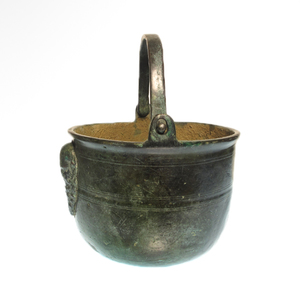 Bronze situla with the head of Silenus. Private collection in London. Height - 8.9 cm. 2nd century AD.
Bronze situla with the head of Silenus. Private collection in London. Height - 8.9 cm. 2nd century AD.